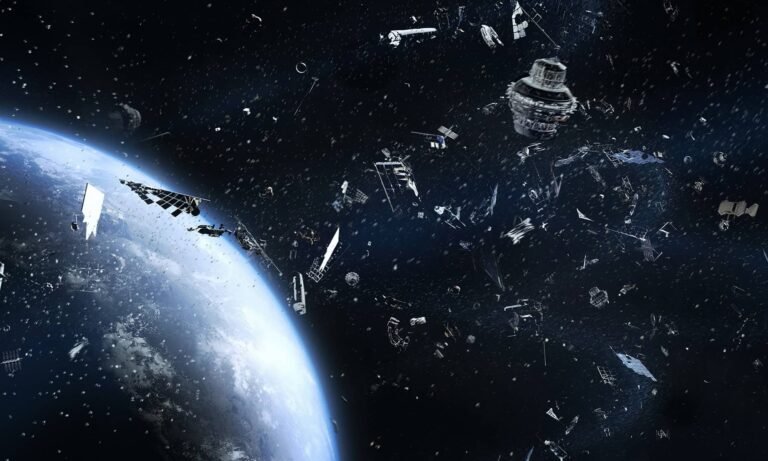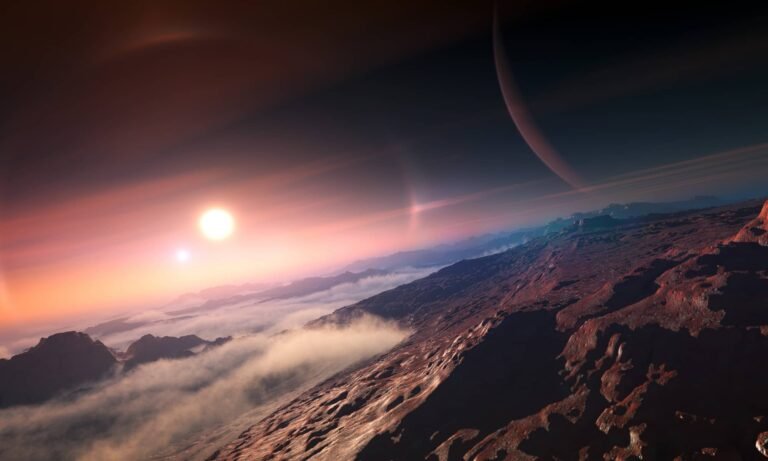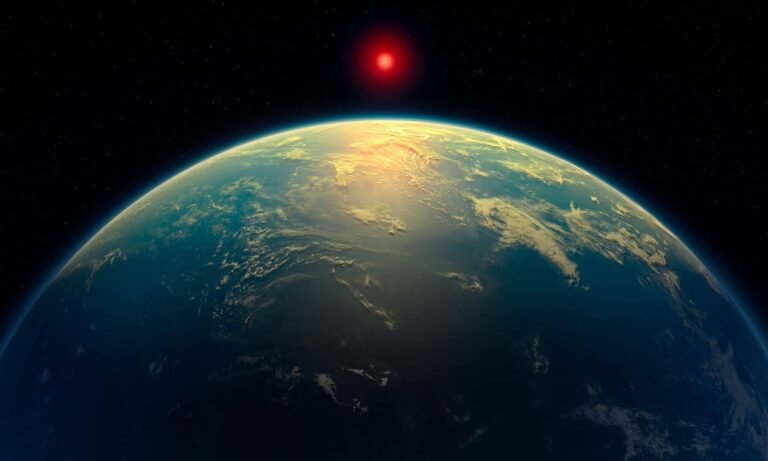The solar system and local stars orbit the center of the Milky Way, a spiral galaxy with 200 billion stars. The Milky Way is part of the Laniakea Supercluster, which includes around 100,000 other galaxies. From Earth, the Milky Way appears as a hazy band of light in the night sky. Nearby, two small galaxies, the Large Magellanic Cloud and the Small Magellanic Cloud, are visible from the southern hemisphere.
Our Solar System
The Solar System is the gravitational bound system comprising the Sun and the objects that orbit it, either directly or indirectly.
Of those objects that orbit the Sun directly, the largest eight are the planets – among them The Earth – with the remainder being significantly smaller objects such as Dwarf Planets and small Solar System bodies. Of the objects that orbit the Sun indirectly, the moons, two are larger than the smallest planet Mercury.
The Solar System Formed 4.6 Billion Years Ago from the gravitational collapse of a giant interstellar molecular cloud. The vast majority of the system’s mass is in the Sun, with the majority of the remaining mass contained in Jupiter.
- The four smaller inner planets, Mercury, Venus, Earth and Mars, are terrestrial planets, being primarily composed of rock and metal.
- The four outer planets are giant planets, being substantially more massive than the terrestrials.
- The two largest, Jupiter and Saturn, are gas giants, being composed mainly of hydrogen and helium.
- The two outermost planets, Uranus and Neptune, are ice giants, being composed mostly of substances with relatively high melting points compared with hydrogen and helium, called volatiles, such as water, ammonia and methane.
All eight planets have almost circular orbits that lie within a nearly flat disc called the ecliptic.
Quick Facts
- Planets 8
- Dwarf planets: 5
- Moons: Known = 149 | Provisional = 26 | Total = 175
- Comets: More than 3,400
- Asteroids: More than 715,000
- Solar system: Planets, Small Bodies, Moons, Regions and Stars
- Known to the ancients: Mercury, Venus, Mars, Jupiter, and Saturn. These planets are visible to the naked eye and have been known since prehistoric times.
- Modern: Uranus (1781), Neptune (1846) and dwarf planet, Pluto (1930) were discovered only after the invention of the telescope. It was in 2006 when Pluto was reassigned as a dwarf planet.
Mass Facts
The Sun contains 99.85% of all the matter in the Solar System. The planets, which condensed out of the same disk of material that formed the Sun, contain only 0.135% of the mass of the solar system. Jupiter contains more than twice the matter of all the other planets combined. Satellites of the planets, comets, asteroids, meteoroids, and the interplanetary medium constitute the remaining 0.015%. The following table is a list of the mass distribution within our Solar System.
- Sun: 99.85%
- Planets: 0.135% (our Earth is part of this share while Jupiter contains more than twice the matter of all the other planets combined)
- Comets: 0.01% ?
- Satellites: 0.00005%
- Minor Planets: 0.0000002% ?
- Meteoroids: 0.0000001% ?
- Interplanetary Medium: 0.0000001% ?
Speed Facts
The Galactic Year, or cosmic year, is the time required for the Sun to orbit the center of the Milky Way, approximately 225 million Earth years. The Solar System travels at an average speed of 230 km/s (828,000 km/h) around the Galactic Center, allowing it to circumnavigate Earth’s equator in 2 minutes and 54 seconds, which is about 1/1300 of the speed of light.
Doomed Facts
The galactic year, also known as a cosmic year (roughly 225 million earth years) is the duration of time required for the Sun to orbit once around the center of our Milky Way Galaxy. → Timeline of the Universe and Earth’s History in Galactic Years.
The galaxies in our neighborhood are also rushing at a speed of nearly 1,000 kilometers per second towards a structure called the Great Attractor, a region of space roughly 150 million light-years (one light year is about 9,5 trillion kilometers) away from us. This Great Attractor, having a mass 100 quadrillion times greater than our sun and span of 500 million light-years, is made of both the visible matter (15%) that we can see along with the so-called Dark Matter (85%) that we cannot see.
Our whole galaxy is falling into something at freaking warp speed! But the Great Attractor itself is also moving in reference to other things…
The Great Attractor’s gravitational pull reveals a massive concentration of matter influencing vast cosmic distances.
What’s More

My Blog ( 110 )
Dependence (10) Fiction (9) Karma (9) Landmarks (10) Paramount (9) Spectrum (9) Spotlight (9) Take Off (9) Terra Shapes (9) Trepidation (9) Unique (9) Virtue (9)
Amazing Stuff (9) Beyond Known (9) Controversial (9) Digital World (10) Inequities (10) Innovative (9) Metaphysics (9) Orbiting Entities (10) Our Society (10) Outer Space (9) Value Creation (10) Yearnings (10)

My Interests ( 114 )
Site Forum
Curious to dive deeper and ready to share your thoughts on this? Join the conversation and be part of the FORUM@ericroth.org Your online discussion board providing space for engaging exchanges on specific topics and shared interests across this website.












